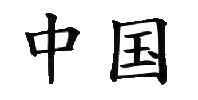China Beat Archive

China Beat Blog: Archive 2008-2012
Date of this Version
2-25-2009
Document Type
Article
Citation
February 25, 2009 in The China Beat http://www.thechinabeat.org/
Abstract
I never thought I’d see “Free the Uighurs” on the editorial pages of major U.S. newspapers, but there it was last Thursday in the Washington Post (Editorial, February 19, 2009, p. A14) and Monday in the Los Angeles Times (Editorial, Feb. 23, 2009). Of course, the editorial was not discussing Uyghurs in China, but the seventeen Uyghur detainees at Guantanamo, whom a federal appeals court ruled could be brought to the U.S. only by an act of the executive branch, not the courts. The Post urged the Obama administration to do the right thing by these men, whom the Bush administration acknowledged years ago were not “enemy combatants” but whom it could neither send back to China nor find a third country willing to take.
It was not that long ago that references to Uyghurs hardly ever appeared in the international press. From the late 1980s through the late 1990s there were occasional stories, when reporters given rare opportunities to travel to Xinjiang sought out silk road exotica and separatism—story lines they seem to have settled on before their trip. It was not hard to flesh out the template with colorful minority clothing, mutton kabobs and some young guy in the bazaar complaining about the Chinese. The rare actual violent incidents were exciting—they fit the imagined narrative that Xinjiang was a “simmering cauldron” or “powder-keg waiting to blow.” But they were harder to write about, as information was scant and mainly filtered through PRC state media, which was then intent on minimizing any local unrest or dissent. Internally, in the late 1990s Xinjiang Party officials still worried about the Xinjiang issue becoming “internationalized”—in other words, emerging, like Tibet, as a global cause célèbre.
After September 11th, 2001, China abruptly reversed course, deliberately publicizing the issue of Uyghur dissent as “terrorism, separatism and religious extremism,” and explicitly linking potential unrest in Xinjiang (the region was in fact quiet from 1997 through 2008) to Al Qaeda and the U.S. “global war on terror.” This linkage was accomplished through a document issued in English by the State Council in January 2002, official press reports, and print and broadcast interviews with Chinese leaders. The message was much reiterated in subsequent years; state media and PRC leaders proclaimed Uyghurs to be the main potential security risk to the 2008 Olympics (in the spring before and during the Olympics, there were in fact three incidents of what seems to have been politically-inspired violence involving Uyghurs in Xinjiang.)
Included in
Asian History Commons, Asian Studies Commons, Chinese Studies Commons, International Relations Commons


Comments
Copyright February 25, 2009 James Millward. Used by permission.